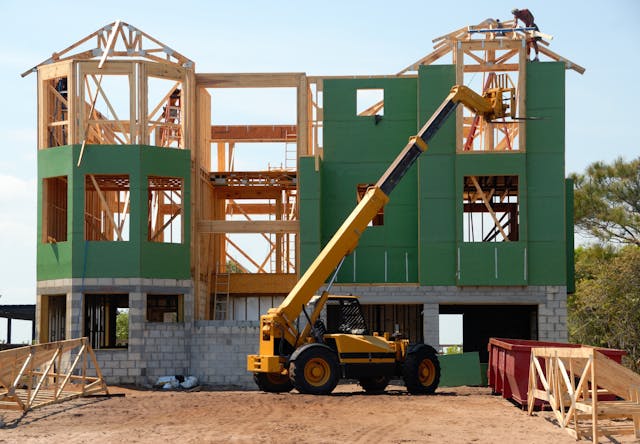
- Sustainable design strategies are pivotal, incorporating renewable materials and energy-efficient blueprints for environmental conservation.
- Effective debris management on-site involves recycling and reusing materials, minimizing waste, and preventing pollution.
- Educating the workforce on sustainability practices, including recycling and energy-saving techniques, fosters a culture of conservation.
- Achieving a greener future in construction requires a holistic approach, combining design, waste management, and staff education.
Resource conservation in construction projects is becoming increasingly important as people strive to reduce our impact on the environment. By implementing sustainable practices, you can minimize waste, save money, and protect natural resources for future generations. This blog will explore essential tips for conserving resources in construction projects.
Use Recycled Materials
One of the easiest ways to conserve resources in construction projects is to use recycled materials whenever possible. Not only does this help reduce the demand for new raw materials, but it also keeps waste out of landfills. There are many kinds of recycled materials that can be used in construction. Here are four common examples:
Recycled Plastic
Plastic is a versatile material that is used in construction for various purposes, from pipes to insulation. By using recycled plastic, you reduce the need to extract and process new crude oil, the primary raw material used to produce plastic. Plastic can also be recycled multiple times without losing its quality, making it a sustainable choice for construction projects.
Recycled Metal
Metal is another commonly used material in construction. By opting for recycled metal, you reduce the energy required to extract and process new metal ores. This energy-saving translates into cost-savings for construction projects as well. Additionally, using recycled metals reduces the environmental impact of mining activities and decreases the amount of waste going into landfills.
Recycled Concrete
Concrete is one of the most widely used construction materials, but it is also responsible for a significant amount of carbon emissions. By using recycled concrete aggregates (RCA) in construction, we can reduce the need for new concrete production and decrease carbon emissions by up to 20%. RCA is made from crushed concrete and can be used in various construction applications, including road bases, drainage systems, and building foundations.
Recycled Wood
Wood is a renewable resource, but it takes time for trees to grow and mature. By using recycled wood products such as reclaimed lumber or wood composites made from sawdust and recycled plastic, we reduce the demand for new trees to be cut down. This helps in preserving forests and their diverse ecosystems. Recycled wood also has the added benefit of diverting waste from landfills.
By choosing recycled materials, you can lower your project’s environmental footprint while still achieving high-quality results. Additionally, incorporating recycled materials into your construction projects can also contribute to achieving green building certifications such as LEED (Leadership in Energy and Environmental Design) or BREEAM (Building Research Establishment Environmental Assessment Method). These certifications not only showcase your commitment to sustainability but can also increase the value of your project.
Optimize Design Efficiency

Another key aspect of resource conservation in construction projects is optimizing design efficiency. This involves carefully planning the layout of a building to maximize natural light, airflow, and energy efficiency. By incorporating features such as solar panels, energy-efficient windows, and green roofs into your design, you can reduce the project’s overall resource consumption. Work closely with architects and engineers to develop a sustainable design that minimizes waste and maximizes efficiency.
Implement Construction Debris Management

Construction debris can have a significant impact on the environment, from polluting waterways to contributing to air pollution. To minimize these effects, it’s essential to implement proper construction debris management practices.
The use of a construction debris tarp can help contain and collect debris on-site, reducing the risk of it being blown away or entering nearby bodies of water. This tarp can also be used to cover materials and equipment when not in use, preventing them from being exposed to weather elements and reducing the need for replacements.
Educate Your Team
Lastly, educating your team about the importance of resource conservation in construction projects is crucial for success. Make sure all workers understand the significance of sustainable practices and how they can contribute to conserving resources on-site.
Provide training on recycling procedures, energy-saving techniques, and proper waste disposal methods. By fostering a culture of sustainability within your team, you can ensure that everyone is working towards the same goal of resource conservation.
The pathway to resource conservation in construction is multifaceted, requiring a holistic approach that encompasses sustainable design, effective debris management, and comprehensive education of your workforce. By emphasizing these principles, not only can you significantly reduce the environmental footprint of our construction projects, but you can also pave the way for a more sustainable and responsible industry. It’s our collective responsibility to adopt these practices, ensuring that you’re not just building for today but for a greener, more sustainable future.

